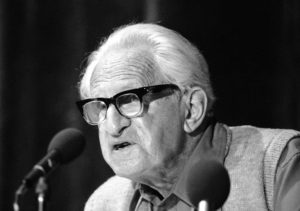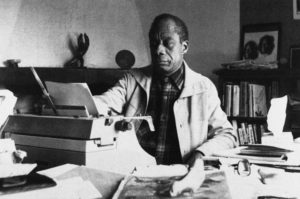Margaret Atwood’s Powerful Antidote to Civilizational Collapse
In the sequel to “The Handmaid’s Tale,” the award-winning author provides nuanced narrative to help fend off the chaos that’s consuming us. Nan A. Talese
Nan A. Talese
“The Testaments”
A book by Margaret Atwood
Time and time again, the author Margaret Atwood has reiterated that everything in “The Handmaid’s Tale” has a historical precedent. Atwood might not be able to predict the future, but she can remind us of the old adage: “History doesn’t repeat itself, it rhymes.” She described “The Handmaid’s Tale” as an “anti-prediction,” a template for what not to do. In “The Testaments,” Atwood’s sequel to “The Handmaid’s Tale,” the writer again projects the past into the future. This sequel focuses less on violence and the perversity of society in Gilead, and more on daily life among the more privileged classes, as well as how experience and stories shape characters. Here is a story to learn from.
“The Testaments” is told through three overlapping firsthand stories told by three women, which together explain a chain of events that occurred 15 years after Offred’s final scene. One of these stories is Baby Nicole’s, who is now 16 years old and living in Canada, protected with a different name. One is Agnes’s—better known to Hulu show fans as Hannah—who was snatched from her parents Offred and Luke and raised by the regime. The other testimony comes from Aunt Lydia, the iron-fisted enforcer of the new ideology who retrains handmaids in the infamous Red Center. Each story is propulsive and distinct in voice. Agnes’s story, in particular, has the flavor of a Gothic Victorian novel.
We last saw Offred at the end of “The Handmaid’s Tale.” Her fate was uncertain. She was getting into a car, and it was unclear whether the drivers were Eyes, members of the secret police coming to arrest her, or members of the Mayday resistance, set to free her. Ambiguous endings fuel our imagination and can distinguish pessimists from optimists, though in hard times many of us look to stories for hope. Stories tell us that monsters can be vanquished and freedom attained by those who persevere, retaining their humanity; they reassure us that justice will prevail. Margaret Atwood said one inspiration for “The Testaments” was the many questions from voracious fans. This sequel delivers the promised answers and closure.
Click here to read long excerpts from “The Testaments” at Google Books.
The importance of storytelling is a major theme in the novel. Storytelling has the capacity to forge chains and to break them, to shape identities and make people cooperate. Like in other oppressive states where books were burned or heavily censored, Gilead doesn’t like its citizens to have free access to stories—in fact, women are not allowed to read at all. Reading and writing are dangerous; both can sow the seeds of doubt that encourage free-thinking and, in turn, rebellion or revolution. Only those with power have access to the forbidden knowledge. The regime also recognizes that stories underpin and buttress belief—the right stories, if edited to fit the political agenda, can be used for propaganda.
In Gilead, women are supposed to be silent, illiterate witnesses, passive beyond domesticity. In writing their testimonies, our three female sources offer an alternative narrative to the patriarchal one offered by the state. They are the echoes of people saying “my life mattered” when their names and agency was erased. Female testimonies might not be deemed important in this tyranny, but they are integral to our understanding of the greater story. Women may have been instrumental in forging Gilead, but they are also instrumental in demolishing it.
Many fans thought the 1985 novel prescient when Trump came into power. In the last decade, we’ve witnessed threats to bodily autonomy and Planned Parenthood, all while the climate crisis has become more urgent. The second inspiration for “The Testaments,” says Atwood, came as a response to the parallels between Gilead and the world we’re living in today. In newspapers, we still see images of refugees in lifeboats on rough seas, stories of human trafficking and victim-blaming, struggles over abortion rights, and climate change denial.
A knowledge of history enables Aunt Lydia—as she is known in Gilead—to anticipate coming events after an unexpected coup in the United States. The Hulu series writers provided their motives for Aunt Lydia’s complex cruelty. In “The Testaments,” Atwood provides her own. Well versed in literature and history, she bemoans how tedious tyranny is “in the throes of enactment,” how the plot is always the same. Tedious though it may be, this knowledge endows her with agency—she knows which roles to assume to survive.
The Aunt Lydia presented here is not wholly unsympathetic. We learn she was a family court judge and the first of her family, all trailer dwellers, to attend college. Given a choice, she has no intention of falling from the ladder she has climbed. “I’d been in tight corners before. I had prevailed. That was my story to myself.”
“The Wheel of Fortune rotates, fickle as the moon,” she says, elsewhere. “Soon those who were down will move upwards. And vice versa, of course.” The celestial body that looms in the night sky presents the perfect allegory for understanding history—and other stories. The Moon is ever changing, but predictable in its fickleness. The Moon cycle has an inevitable trajectory, as it ripens and shrinks in the night sky. History too will keep turning and turning, like the Moon that waxes and wanes. The Moon reappears in the narrative in different parts of its cycle. There is a full Moon near the beginning, which reminds Aunt Lydia of Easter and forgotten Neolithic fertility goddesses, while the closure we seek is also witnessed by a full Moon.
Aunt Lydia’s nature-inspired worldview likely comes from Atwood’s own childhood in rural Canada, where there was no electricity and people used the Moon to predict the weather, as she recalled at the Moon Festival earlier this year. Rather than fall prey to fortune, Aunt Lydia wants to be instrumental in turning the wheel; she wants to hold on to power.
Yet never does she let go of her judicial need for retribution. She is pragmatic and utilitarian, at least in her testimony. She is conscious, too, that she has almost succumbed to the lust for power, and seeks redemption. She has faith in the knowledge that all civilizations collapse—that the future will rhyme with the present and the past. Dancing and nail polish will return, she says, they always do.
Aunt Lydia’s greatest asset in surviving—and keeping a grip on power—is her knowledge of history and stories. Reading has equipped her with Machiavellian cunning. She knows how to play the cards right. She knows you can never be certain of loyalties, that her best bet is to divide and conquer. Like others in “The Testaments,” she lies to provide people the story they need to cooperate. The new mythology of the world she co-creates is so convincing, she too almost believes it.
Next to Aunt Lydia, Nicole and Agnes know very little about the world. In their respective testimonies, they divulge coming-of-age stories from two sides of the border. Both are lied to (for protection and oppression) and begin to question things. Many adults lie in “The Testaments,” and in that sense, many tell stories to comfort (others or themselves), to protect, or to encourage cooperation.
Agnes from a young age was told fairy tales to explain her situation. Initially she believes them, but children are smarter than we give them credit; they too, in time, might seek to interrogate plot holes. “Once a story you’ve regarded as true has turned false,” Agnes says, “you begin suspecting all stories.”
As we mature as readers, we (hopefully) lose our binary vision. We learn that there is a whole dimension of gray territory between the two polarized dualities of good and evil that exist within fairy tales. Life is more nuanced. When Nicole learns of the death of a Gilead missionary, she is initially pleased, while her foster parents show more compassion. When she later encounters loss firsthand, she develops a more nuanced view.
That is what “The Testaments” presents us with: a nuanced view. In “The Handmaid’s Tale,” Aunt Lydia notes: “Ordinary […] is what you are used to. This may not seem ordinary to you now, but after a time it will. It will become ordinary.” Gilead is still a totalitarian state. There are still public executions. Women are still raped. Baby Nicole and Aunt Lydia have become icons—their photos in public spaces are eerily similar to the Cult of Personality used in regimes such as North Korea. Even an escape from Gilead does not mean freedom. Its escapees struggle to find peace, and like other oppressive states, Gilead has its spies beyond its territories. As is the case in times of scarcity, all in Gilead are losers, male and female—except those who wield power—though possessing power is a hazardous affair, as we learn from Lydia’s testimony.
Divisive politics in Gilead helps strengthen people’s beliefs in borders and the regime, as it does in the United States at present. At a protest in Canada between both sides, there are no conversations, but eggs are thrown at Gilead missionaries. These actions likely only confirm what Gilead tells its citizens about the “barbarians” outside. The regime too, divides and conquers from within. Gilead, with its new stories, presents new roles for its actors to assume: Aunts are sinister and all-seeing; Handmaids are scary and cunning; Marthas are all the same. Through Agnes, we can see how a kind person can inherit convictions of an oppressive state or family. At what point are we responsible for a worldview we have inherited? And how can we dismantle oppressive beliefs? In “The Testaments,” we are reminded that friendship—and sisterhood—have the power to unite people. Through conversations and storytelling, we can gain empathy, learn and unlearn.
There is still violence and inequality and oppression, but there are moments of normalcy amid it all; North Korean defectors often speak with nostalgia about their childhoods. So do Gilead’s children. Much of “The Testaments” centers on that normalcy in the interval between bombs.
There are, dare I say, some things we can learn from Gilead, particularly as we seek solutions for tackling the climate crisis. Gilead is against food waste, and its citizens are generally more conscious consumers, grateful for hand-me-downs and bland food. At school, they have nature appreciation classes—the unspecified nuclear disaster is still fresh in their collective mind. Agnes recalls some of the gentler learnings she encountered in schools, when Aunts weren’t teaching her and her classmates how to be good wives and avoid tempting men: “Animals had died for us, Aunt Lise reminded us, and vegetables too.”
From the members of the Mayday resistance, we’re reminded of the power of brave acts of activism, many of which put the activists at risk. From stories, and history, we can take the good and reject the bad. Effective dystopian fiction is terrifying, propulsive reading because it resonates. Because we’re living in difficult times, and it feels ordinary. Women’s rights are under threat. So is our planet. Sometimes we need to see things in a different context—with a different narrative—to see that not all is right in this strange reality we have created for ourselves today. This is not the story we want to live. A number of social commentators, among whom are Adam Curtis and Yuval Noah Harari, have speculated that the antidote to civilizational collapse might lie in religion or new myths, which provide narrative in the chaos.
In “The Testaments,” Commander Judd, in a misogynistic rant, recognized this need for stories and saw it as an opening for attaining power:
We have seen the results of too much laxity, too much hunger for material luxuries, and the absence of the meaningful structures that lead to a balanced and stable society. Our birth rate—for various reasons, but most significantly through the selfish choices of women—is in free fall. You do agree that most human beings are at their most unhappy when in the midst of chaos? That rules and boundaries promote stability and thus happiness?
This could be considered a prediction, if a prediction is calculated based on historical precedents.
The culture we live in exists because someone once told a story, or many stories. So does Gilead. This is how things become ordinary. We collectively tell ourselves stories to explain our situation, create it, protect it. In this need for stories, we leave ourselves vulnerable to abuse, or to becoming unwillingly complicit in a system that abuses others. Thankfully, even in a totalitarian state like Gilead, nothing is impermeable. Freedom and power can be gained and lost. There is still movement across borders.
Turning and turning, the wheel of fortune keeps spinning. Can we ever escape it? Are we circling or spiraling? Whatever the answer, Atwood’s references to the moon cycle remind us this cycle of fortune is inevitable, too. Telling stories helps us find an anchor in this chaos and navigate difficult circumstances. We can learn to work with nature rather than resist it. “The Testaments” is also a rallying cry to become conscious of the stories we are told, and tell, and the roles we assume. Which choices would we make if in Aunt Lydia’s shoes? Which parts of history do we wish to claim as our own? Which do we reject? Becoming aware of the mythos that constrains us also means we can collectively help dismantle it. As readers, we can imagine and work toward a better world.
This article originally appeared on the Los Angeles Review of Books.
Your support matters…
Independent journalism is under threat and overshadowed by heavily funded mainstream media.
You can help level the playing field. Become a member.
Your tax-deductible contribution keeps us digging beneath the headlines to give you thought-provoking, investigative reporting and analysis that unearths what's really happening- without compromise.
Give today to support our courageous, independent journalists.






You need to be a supporter to comment.
There are currently no responses to this article.
Be the first to respond.